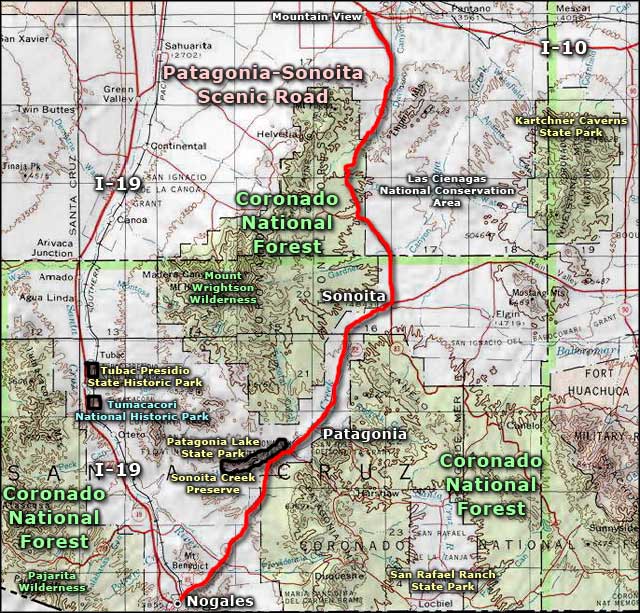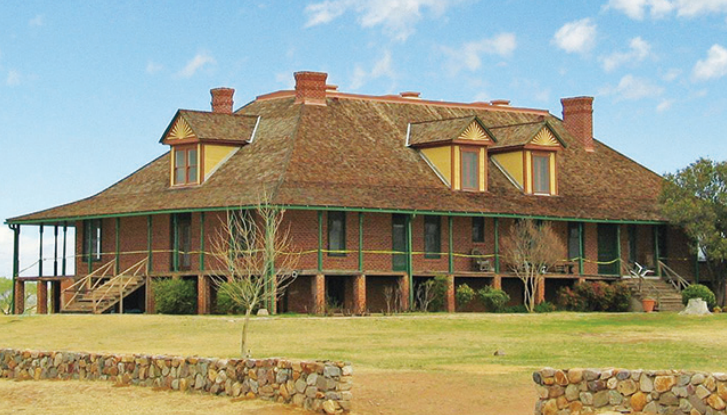San Rafael State Natural Area is a unique and ecologically important area located in southern Arizona. Here are some key details about this natural area:
Location and Geography
San Rafael State Natural Area is situated approximately 15 miles south of Patagonia and 75 miles south of Tucson in Santa Cruz County, Arizona. It encompasses a 35-square-mile expanse of rolling short-grass prairie crossed by the Santa Cruz River. The area features rolling hills, native grasses, and oak and cottonwood trees.


Ecological Significance
This natural area preserves one of the finest stands of native grassland in Arizona that has not been invaded by shrubs, cacti, or exotic plant species. It serves as the headwaters of the Santa Cruz River and provides habitat for many rare and endangered species, including:
- Huachuca Water Umbel (endangered plant)
- Mule deer
- Pronghorn antelope
- Bobcats
- Cougars
- Coyotes
- Various native bird species
History and Management
The area was formerly part of the San Rafael Ranch, which operated from the late 1800s until 1998. In 1999, Arizona State Parks purchased 3,557 acres to establish the San Rafael State Natural Area. The Nature Conservancy holds a conservation easement on an additional 17,000 acres to prevent development.
Public Access
Currently, San Rafael State Natural Area is not open to the public. However, visitors can drive through the area on Forest Service Road 61 (a dirt road) to view the landscape. The focus is on preserving the pristine natural environment rather than recreational development.
Historical Significance
The ranch headquarters, built in 1900, was designated as a National Historic District in 2008. The territorial-style ranch house is over 9,000 square feet and has been featured in several movies.While not accessible for typical outdoor recreation, San Rafael State Natural Area plays a crucial role in preserving a unique and relatively undisturbed example of Arizona’s native grassland ecosystem.
What wildlife can I expect to see at San Rafael State Natural Area?
Based on the information provided, San Rafael State Natural Area is home to a diverse array of wildlife. Here are some of the key species you may encounter:
Mammals
- Mule deer
- White-tailed deer
- Pronghorn antelope (reintroduced in the 1950s, herd of about 60)
- Javelina
- Bobcats
- Cougars (mountain lions)
- Coyotes
The area is part of the Madrean Sky Island bioregion, which is estimated to have the greatest diversity of mammal species in North America.
Birds
- Grasshopper sparrow
- Botteri’s sparrow
- Gray hawk
- Western yellow-billed cuckoo (candidate species)
- Various grassland and prairie bird species
Reptiles and Amphibians
- Mexican gartersnake
- Ring-necked snake
- Ornate box turtle
- Sonoran tiger salamander (federally listed species)
- Pacific treefrog
Fish
- Gila topminnow
- Gila chub
Endangered/Rare Species
- Huachuca water umbel (endangered plant)
- Canelo lady’s tresses
- Sprague’s pipit
- Baird’s sparrow
The San Rafael Valley provides important habitat for many native grassland species. While the area is not currently open to the public, driving through on Forest Service Road 61 may allow you to observe some of this diverse wildlife in their natural prairie habitat. Keep in mind that wildlife sightings can be unpredictable and may vary depending on the season and time of day.
What types of birds are most common in San Rafael State Natural Area?
Based on the search results, San Rafael State Natural Area is home to a diverse array of bird species, particularly grassland birds. Here are some of the most common types of birds you can expect to see:
Sparrows
- Cassin’s Sparrow
- Botteri’s Sparrow
- Grasshopper Sparrow
- Savannah Sparrow
- Vesper Sparrow
- Lark Sparrow
- Chipping Sparrow
- White-crowned Sparrow
- Lincoln’s Sparrow
Raptors
- White-tailed Kite
- Northern Harrier
- American Kestrel
- Merlin
Grassland Species
- Western Meadowlark
- Eastern Meadowlark
- Horned Lark
Longspurs
- Chestnut-collared Longspur (particularly in winter)
Other Notable Species
- Thick-billed Kingbird (summer)
- Varied Bunting (summer-fall)
- Lazuli Bunting (summer-fall)
- Lesser Goldfinch
- American Pipit
The area is especially known for its wintering grassland birds, including various sparrows, pipits, and longspurs. Additionally, the nearby Bog Hole Wildlife Area is noted for waterfowl diversity, including species like Canvasbacks and Cinnamon Teal.It’s worth noting that some rare or hard-to-find species have been observed in the area, such as Baird’s Sparrow in winter, though these are not as common. The grasslands provide important habitat for both resident and migratory bird species throughout the year.
How do the bird populations in San Rafael State Natural Area compare to other areas in Arizona?
Based on the available information, the San Rafael State Natural Area appears to have a diverse and significant bird population compared to other areas in Arizona, particularly for grassland species. Here are some key points of comparison:
- Grassland bird diversity: The San Rafael Grasslands, which include the State Natural Area, are known for their high diversity of grassland bird species. This area provides important habitat for species like Cassin’s Sparrow, Botteri’s Sparrow, Grasshopper Sparrow, and Eastern and Western Meadowlarks.
- Wintering bird populations: The area is especially notable for its wintering bird populations. It hosts significant numbers of raptors, sparrows, pipits, and longspurs during the winter months.
- Rare and endangered species: The San Rafael area provides habitat for some rare or endangered species, including the Western yellow-billed cuckoo (a candidate species) and potentially the Sprague’s pipit and Baird’s sparrow.
- Unique habitat: The San Rafael Valley represents one of the last remaining un-fragmented remnants of a grassland ecosystem in the U.S. between southern California and west Texas. This unique habitat supports bird species that may be less common in other parts of Arizona.
- Important Bird Area (IBA) designation: The San Rafael Grasslands have been designated as an Important Bird Area, meeting criteria for species of conservation concern, including the Chestnut-collared Longspur.
- Comparison to urban areas: While not directly comparable, it’s worth noting that even highly urbanized areas like Phoenix can support significant waterbird populations. The Greater Phoenix Area Waterbird Survey has recorded an average of over 70,000 birds of 60+ species in recent years. This suggests that the more natural habitat of San Rafael likely supports even greater diversity and numbers of land birds.
- Riparian species: The presence of the Santa Cruz River and its tributaries in the San Rafael area also provides habitat for riparian species, adding to the overall bird diversity.
While specific population numbers for comparison are not provided in the search results, the designation as an IBA and the presence of rare and diverse grassland species suggest that the San Rafael State Natural Area supports bird populations that are significant in the context of Arizona’s avifauna.
